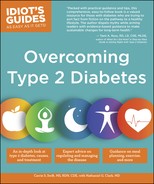Book Description
Idiot's Guides: Overcoming Diabetes is written primarily for people with Type 2 Diabetes, but will also include coverage of Type 1. Comprehensive coverage includes:
-- A prescriptive, positive discussion about diabetes, symptoms, monitoring, medications, treatment, support, and exercise.
-- A focus on how to positive approach dealing with a diagnosis of Type 2 Diabetes-- moving away from the stigma and into living a quality life by overcoming the disease.
-- The facts and fiction of the disease.
-- Information on how fiber, water, saturated fats, alcohol, supplements, and food affect sugar levels.
-- Tips for building a toolkit and support network.
-- Helpful advice on meal planning, various diets, and goals for diabetes control and weight management.
